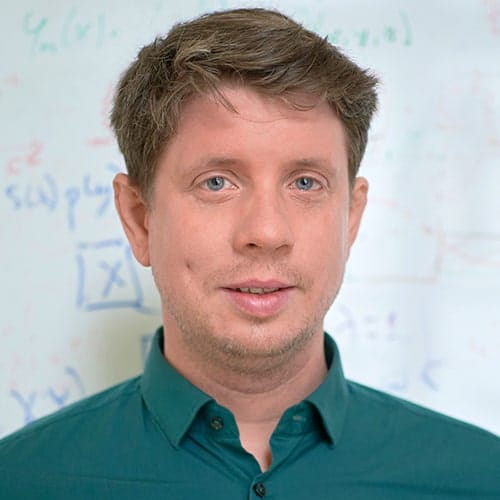NEW IDEAS IN COMPLEXITY SCIENCE
On May 24th, 2018, the First External Faculty Meeting of the Hub started with a public conference.
In short talks complexity scientists from all around globe shared their visions on the question “Complexity: Where do we go from here?”
What are the open, the most pressing, the most promising questions to an understanding of complexity and Big Data?
Find the talks of all conference participants (in order of appearance) on our Youtube channel in the playlist of the conference.
An overview with photographs of the event and links to all available slides can be found here.
PETER KLIMEK
“WE ARE BASICALLY JUST ITERATING INCREMENTALLY ON IDEAS THAT WERE COOL IN THE 90S”
Peter Klimek is an assistant professor at the Medical University of Vienna, primarily researching what Big Data and complexity science have to offer to the future of medicine. He begins his talk by suggesting that complexity science is sticking to the same standard techniques and ideas, such as network and data analysis, and no longer doing anything new.
Peter starts his talk with strong words: “If we keep doing as we do now, we are basically just iterating incrementally on ideas that were cool in the 90s,” he says. “Complexity science is becoming old and boring.”
Instead of following a rigid set of complexity science rules, Peter argues, complexity scientists should step out of the boundaries and learn from other areas.
Peter uses the example of the first macroeconomic computer: People realised that money behaved as a fluid, and the markets like a plumbing system, he says, connecting economic theory and the physical process. Thus the first computer, built in 1893, was a hydraulic model.
John Maynard Keynes used the computer in his pioneering work on macroeconomics. William Phillips also used a hydraulic model in developing his eponymous curve showing the inverse relationship between unemployment rates in 1949.
Today, Peter says, complexity scientists can learn from engineers in the process industries. In trying to understand complex production systems, they make use of sensors all over the plant to generate Big Data and develop a “digital twin” of the plant, where they can test the system before implementing it in reality.
Likewise, Peter requests, complexity scientists should look to develop digital twins of complex systems they are studying to gain more understanding. This, he says, “will allow complexity scientists to really offer something meaningful to society.”
CLICK FOR PETER’S SLIDES.
See the video in full lenght here:

